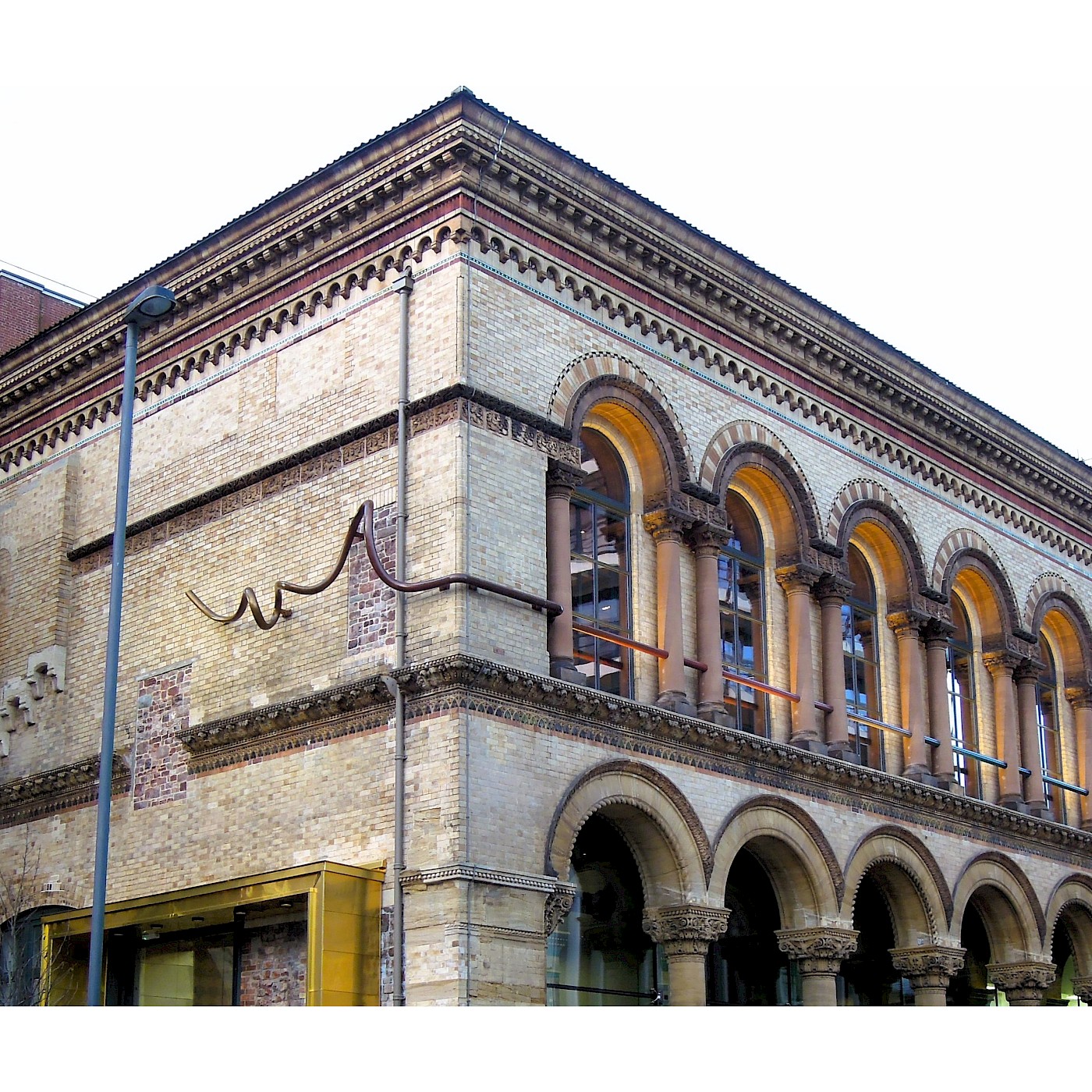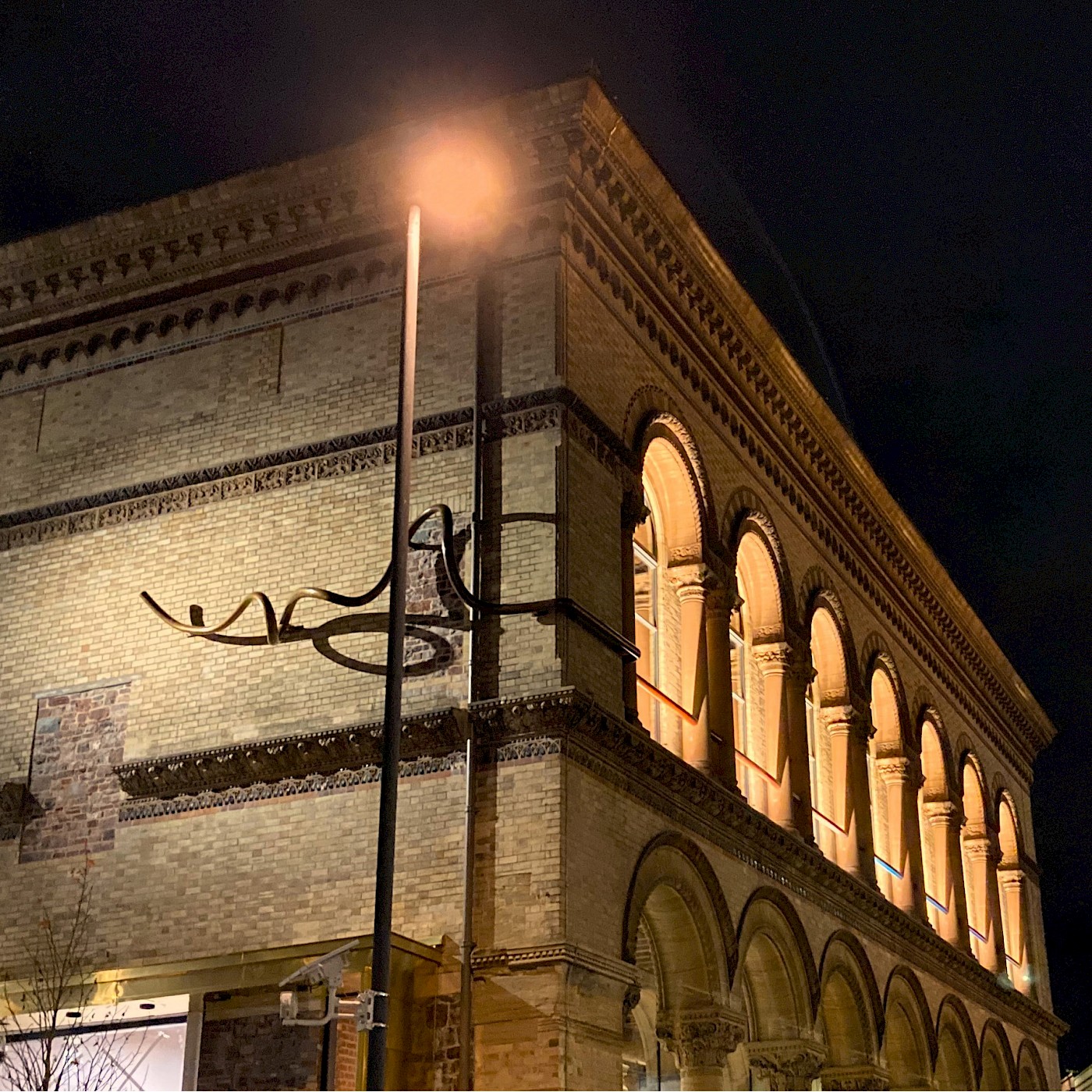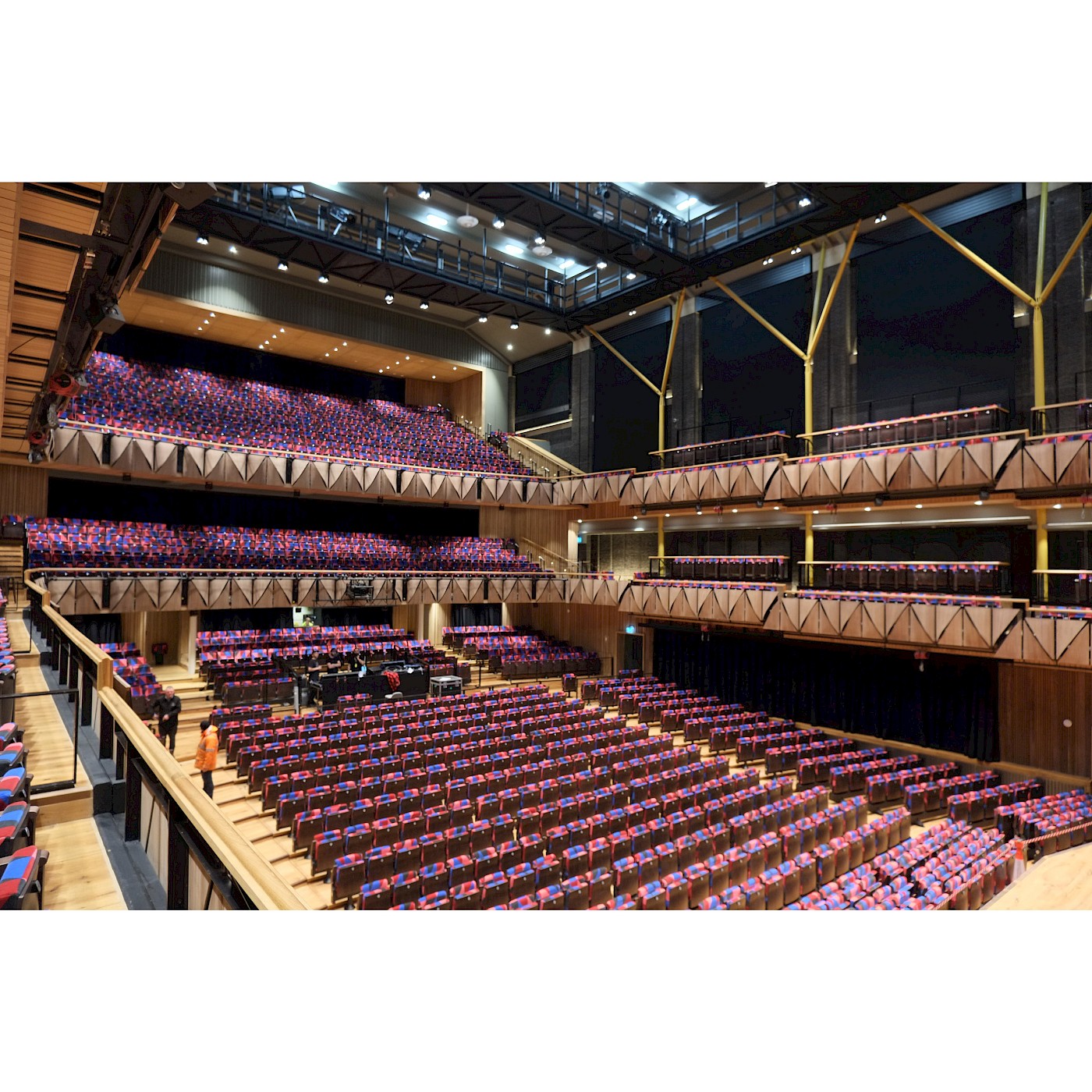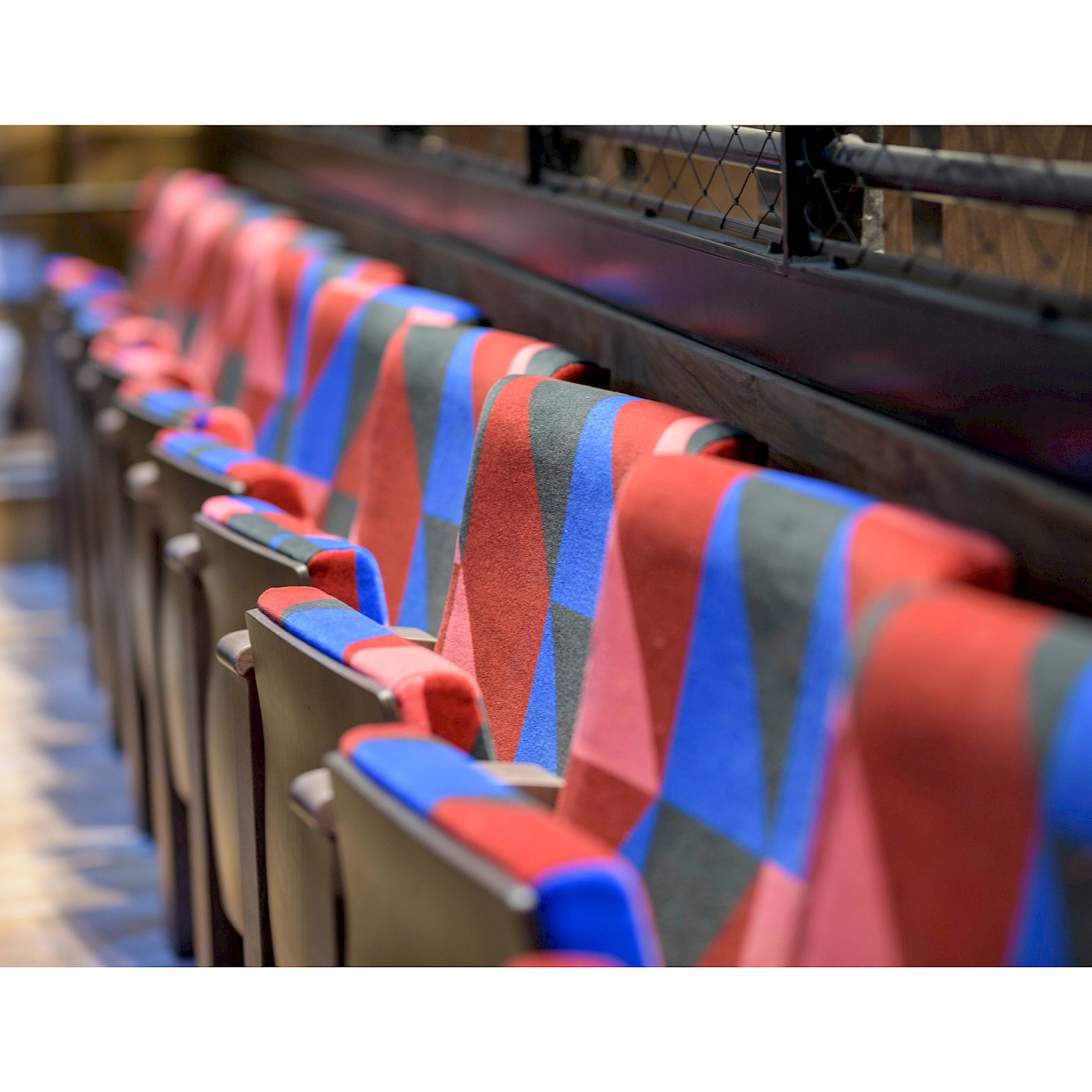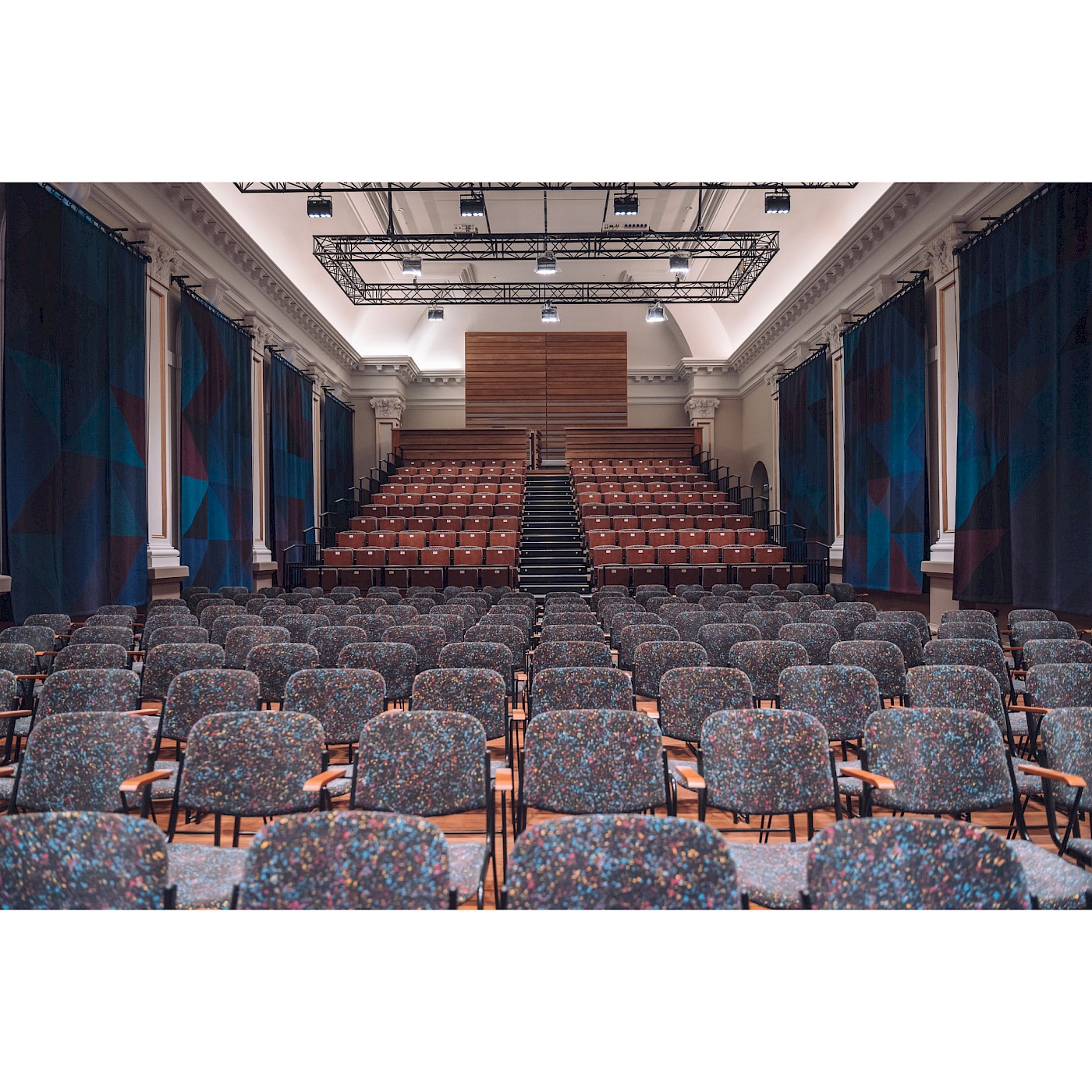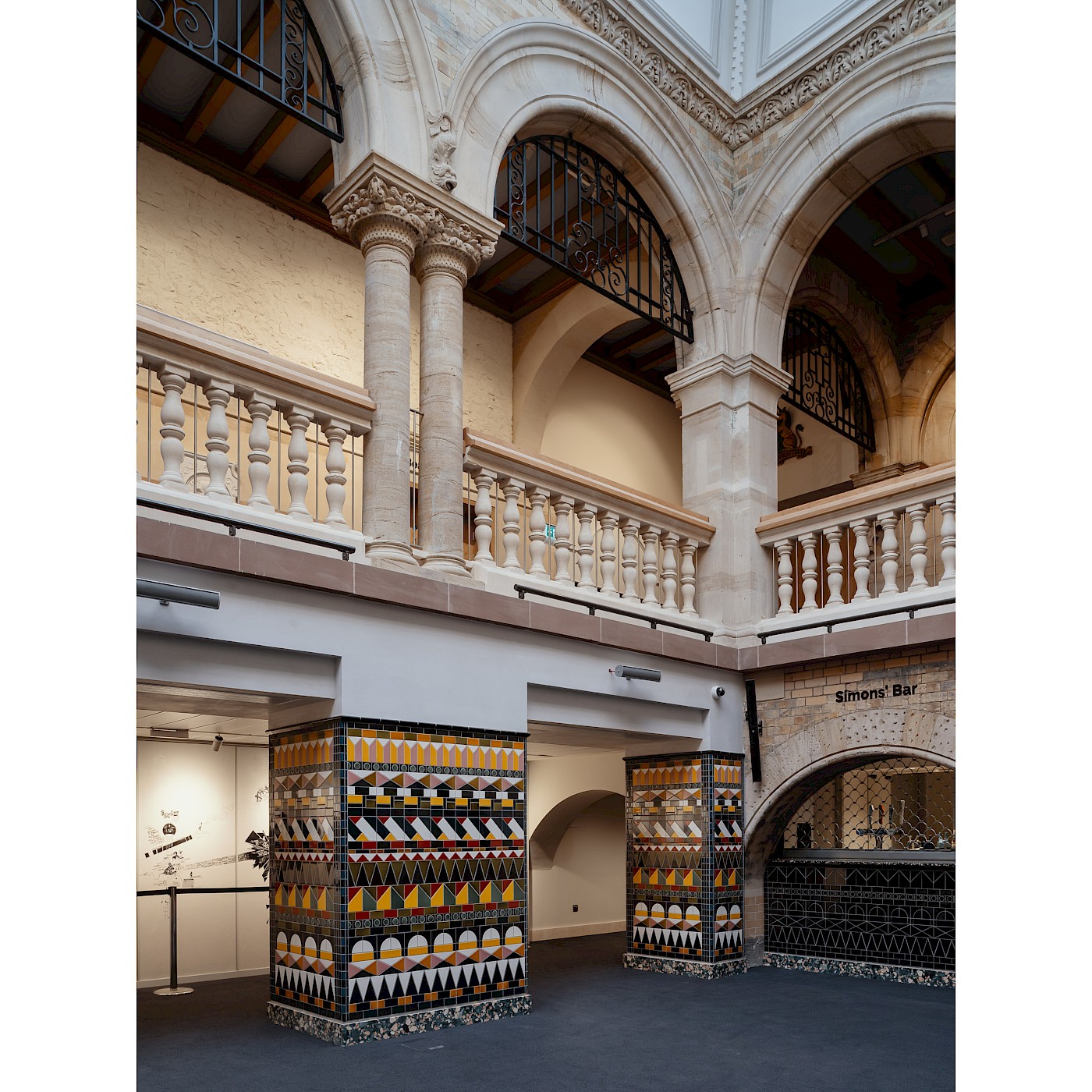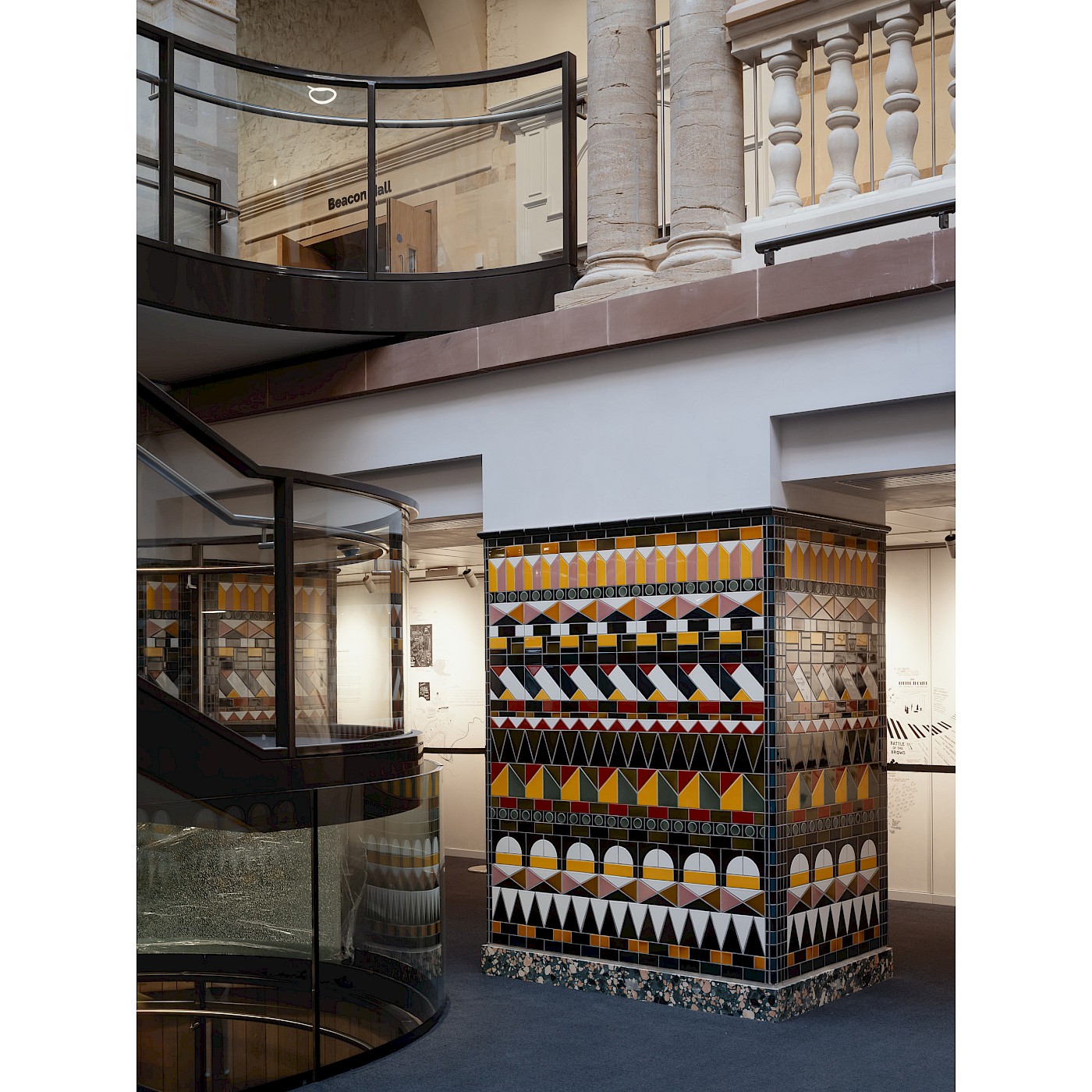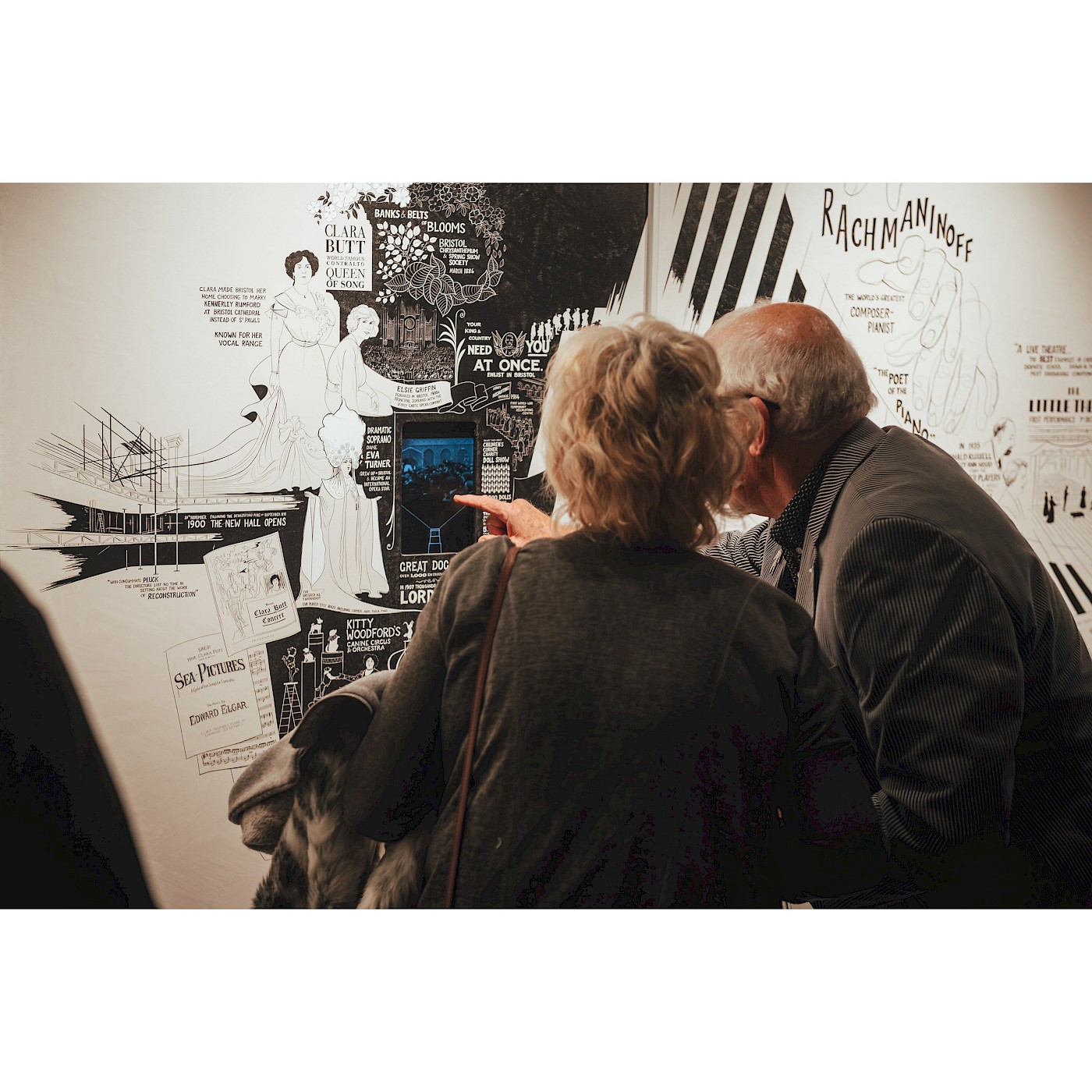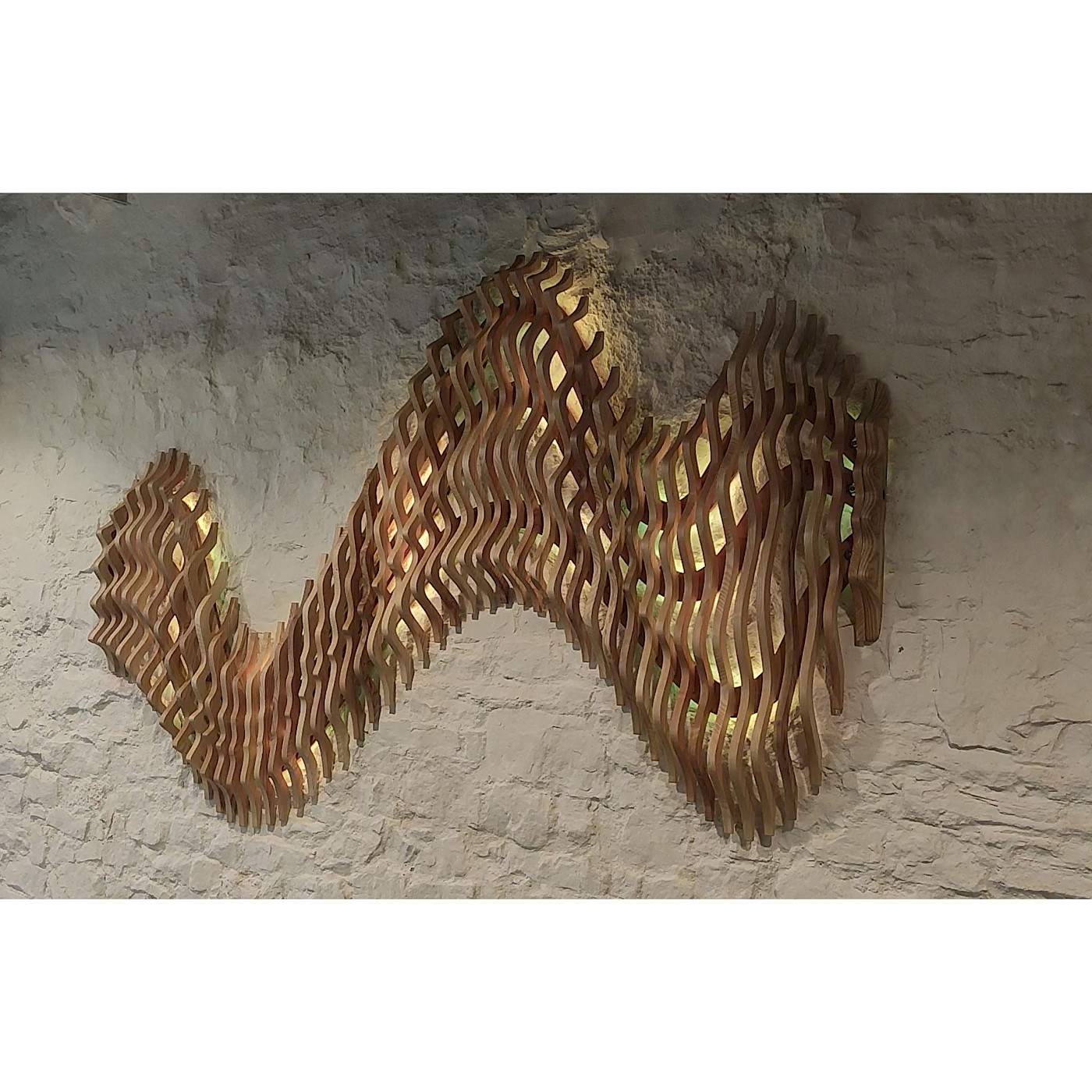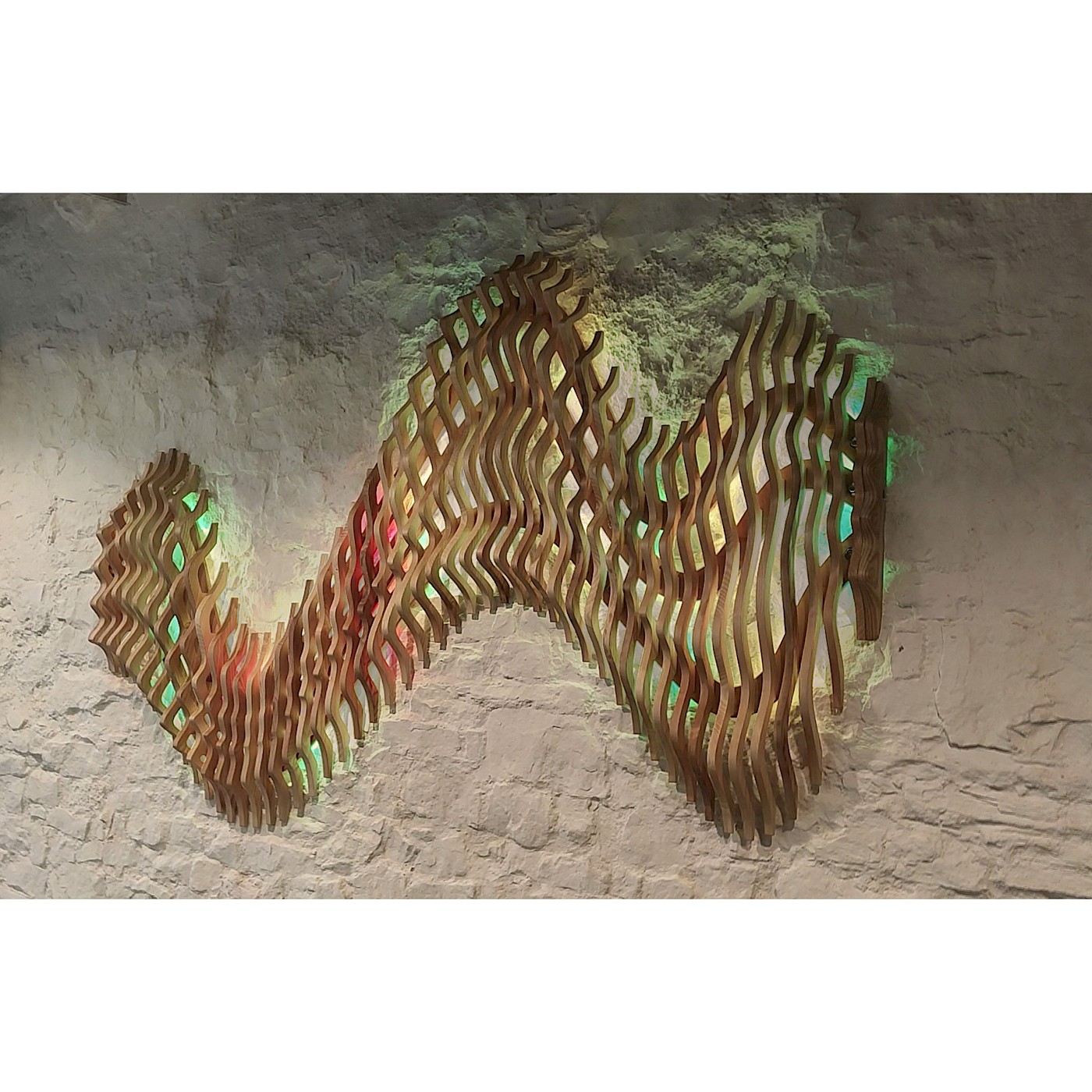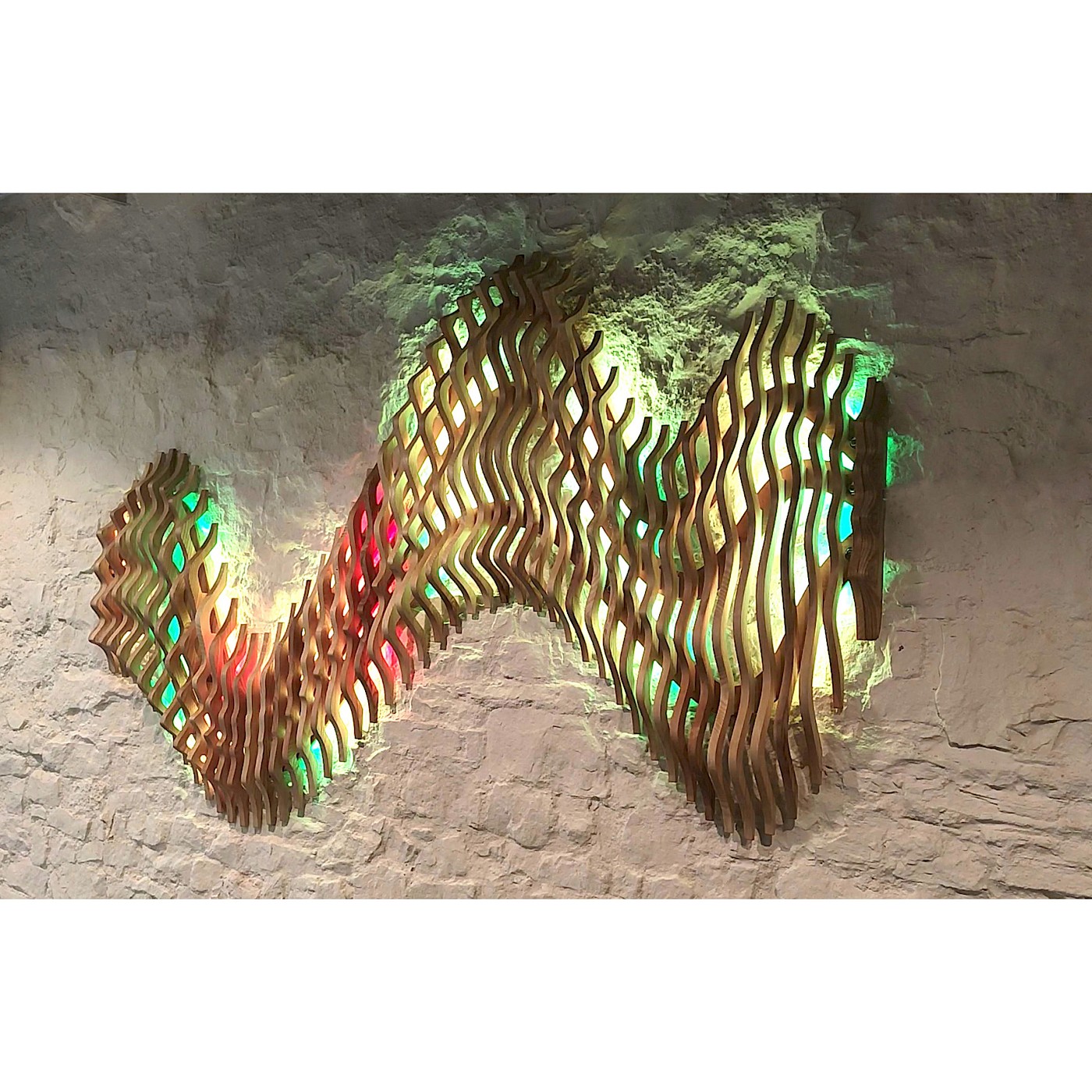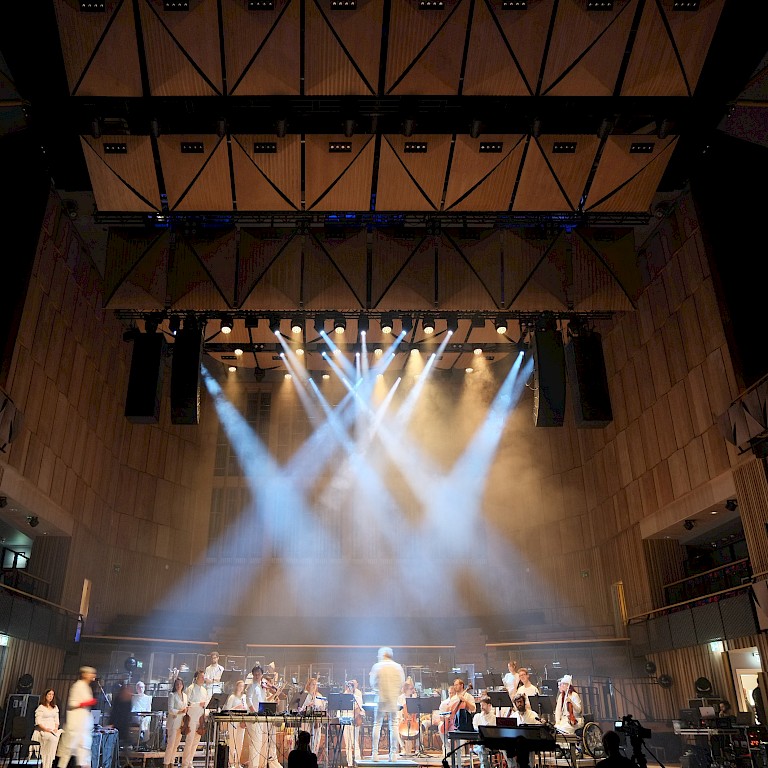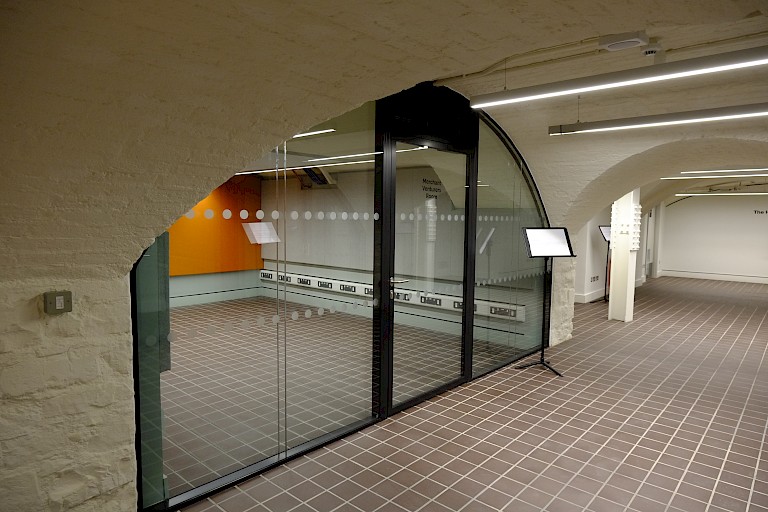Along with the once-in-a-generation transformation of the venue, a series of bespoke art commissions can be experienced across the various spaces of the Bristol Beacon.
Public art curator Theresa Bergne of Field Arts Projects worked closely with Levitt Bernstein to ensure Bristol Beacon is rejuvenated with artists’ voices at its heart. Bristol-based Linda Brothwell, Libita Sibungu, and London-based Rana Begum and Giles Round have each created a bespoke work each to enhance the look and feel of the venue, adding to the richness of the transformation and the experience for visitors.
Each permanent installation draws inspiration from the building and its surroundings, extracting new perspectives on its historical place, referencing its past in a contemporary way and by doing so empowering it to move forward. This includes a response to the building’s relationship with the water that surrounds and flows through the city; the textiles and fabrics within new performance spaces; an architectural installation within the new Lantern space; and a contemporary intervention on the façade of the Lantern building.
Linda Brothwell: “I began by researching the history of the site, in particular the sounds and movements of people in and outside of the Lantern building. Working to create a visual representation which reflects some of those events to create an elegant and joyful work, on a scale appropriate to the building.”
Linda worked with Bristol choreographer Laila Diallo to develop a series of movements describing the sounds of key acoustic moments of the building’s past and its surroundings - starting at the 1867 Opening Night, Vera Holme hiding in the organ with Elsie Howey, ‘Votes for Women’ in 1909 and all the way to the performance of The XX in 2012. These dancing movements are expressed as a ‘trace through the air’ flourish around the corner of the outside of the Lantern Hall.
Rana Begum: “My initial response to the brief was to look at the architecture, the colours, and geometry. I wanted to develop something that reflects the diversity of sound performed in the halls through rhythms, patterns, and repetition. It was important that the work responded to different qualities of light and creates movement.”
Rana has collaborated with Bristol-based fabric designers and textile trend consultancy Dash & Miller. Rana created bespoke textiles to enhance both main auditoriums through massive tapestry-esque suspended surfaces and bespoke upholstery for the auditorium seats.
Giles Round: “Following research into the history of the building and the extraordinary architecture of Bristol, specifically the Bristol Byzantine, the design references the polychromatic decoration used on the façade. It is in part a portrait of the building itself.”
Giles’ work can be seen in the new Simon’s bar area of the central Lantern space. It integrates vibrant, authentic, and exquisitely crafted materials into the renovated original architecture. The structural columns of the space - once hidden and now exposed once more - host Giles’ series of geometric tile patterns and terrazzo stone elements.
Libita Sibungu: “I am creating a soundwork developed from workshops on Bristol's waterways, with black artists, writers, and historians, that pulls the Bristol Beacon into a different reimagined history with guided meditations, fiction writing, sound baths, and water rituals. Internally I’ve been asking; what do we do when there isn’t a place for us to go to remember.”
Libita’s Sonic Poem will be broadcast in January next year
___________
Two larger interventions and artworks, produced and curated by Bristol artist Cathy Mager, celebrate the rich social history and heritage of the Beacon building.
Working with artist Mel Northover, the Story Wall created a beautifully intricate, illustrated narrative of the building’s history, from its opening in 1867 to the present day, celebrating the unsung heroes and hidden stories of the venue’s past.
For the new cellar space, neurodivergent artist Frankie Boyle has created Convergence; an undulating sculpture of ash wood ribs that resemble a warped keyframe inside a piano. This artwork is a homage to the music creation and innovation that has taken place in the building for over 150 years.
___________
“The transformation of our building is about more than just the bricks and mortar. It has been an important and iconic venue in the heart of the city for many generations, so our public art programme will help us to ensure we make the most of and celebrate this special space, reflecting the 150-plus years of history whilst also looking forward to the future.”
Louise Mitchell (Chief executive of Bristol Beacon)
